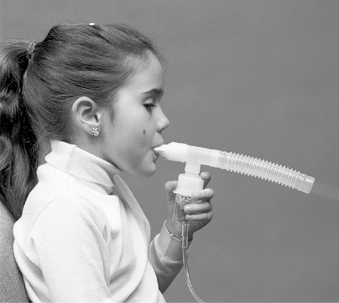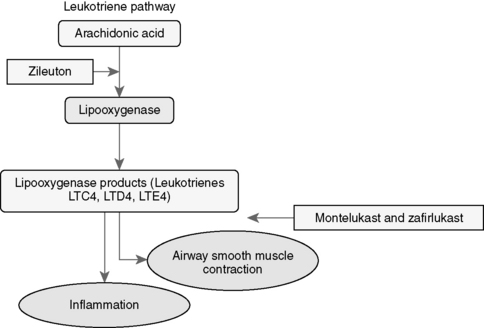CHAPTER 20 Respiratory Disorders

Figure 20-1 Airway changes during asthma.
(From Gould BE: Pathophysiology for the health professions, ed. 3, St. Louis, 2007, Saunders)

Figure 20-2 Nebulizer.
(From Hopper T: Mosby’s pharmacy technician, ed. 2, St. Louis, 2007, Saunders)

Figure 20-3 Leukotriene pathway.
(From Moscou K, Snipe K: Pharmacology for pharmacy technicians. St. Louis, 2009, Mosby)
PATIENT PROFILE
Allergies: No known drug allergies (NKDA)
Social History: Tobacco use: Former heavy smoker; quit 5 years ago when husband died of lung cancer
Centrum Silver 1 tablet PO once daily
Spiriva Handihaler 1 capsule inhaled once daily in the morning
Simvastatin 40 mg PO once daily at bedtime
Mucinex 1 tablet PO twice daily
Levaquin 500 mg once daily for 5 days (continuation of medication from hospital)
Clarithromycin 500 mg PO twice daily for 5 days (continuation of medication from hospital)
Advair inhaler 1 inhalation twice daily
PATIENT PROFILE QUESTIONS
REVIEW QUESTIONS
(Answers and Rationales on page 375.)





